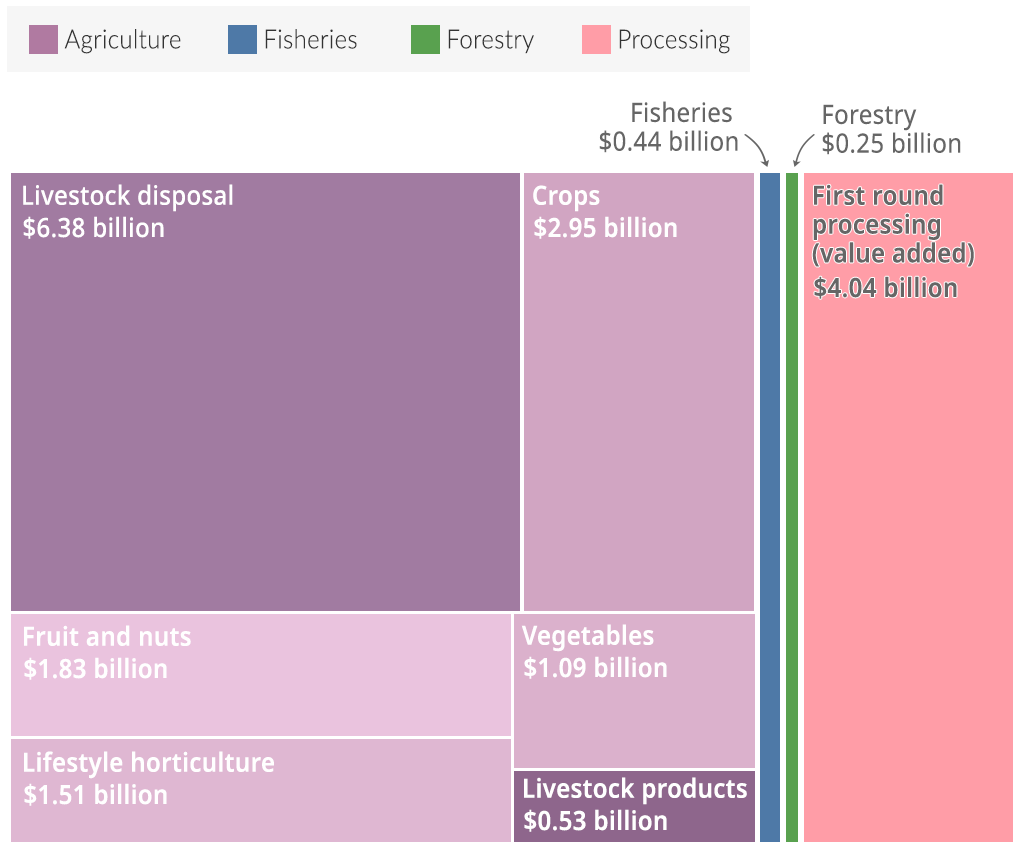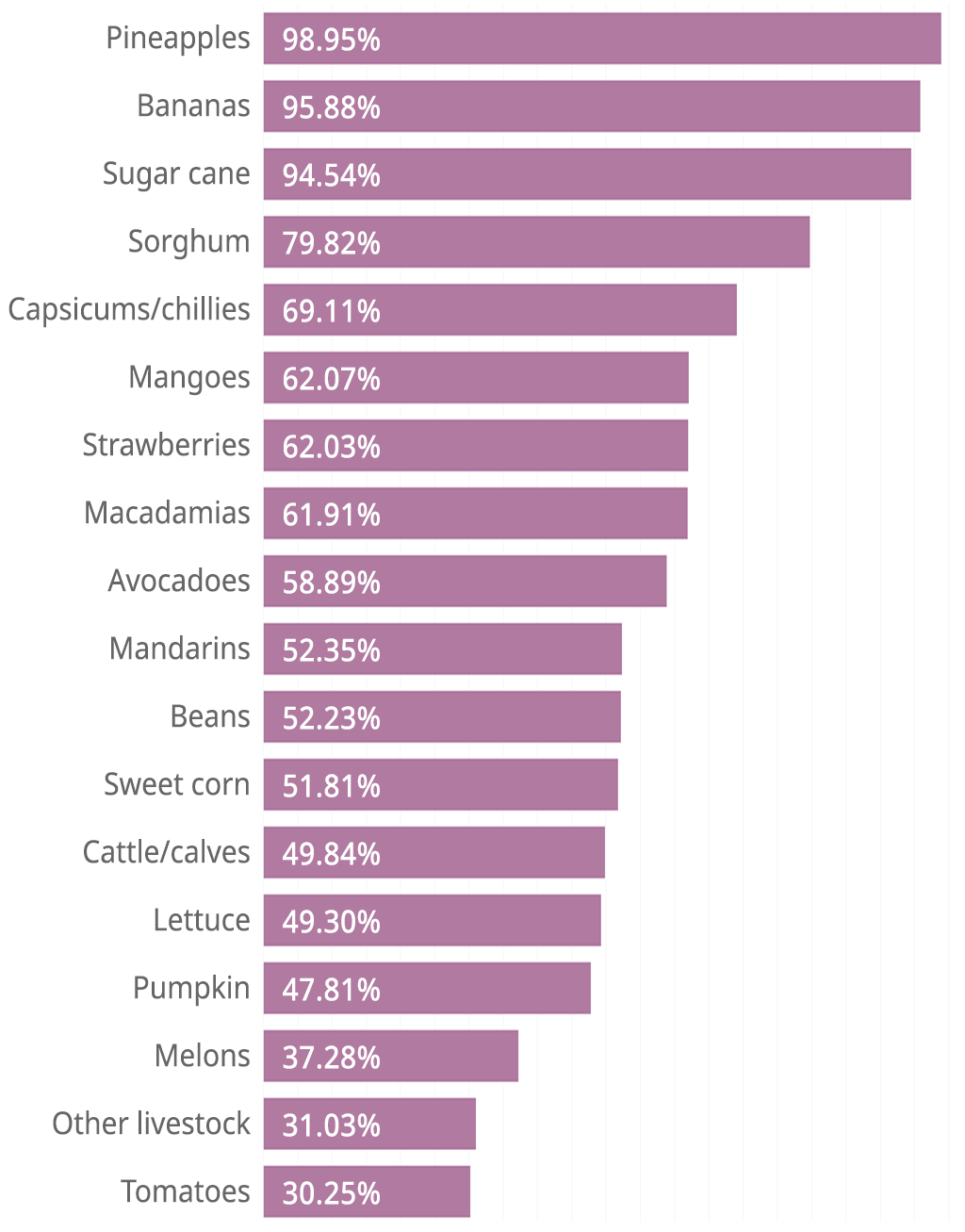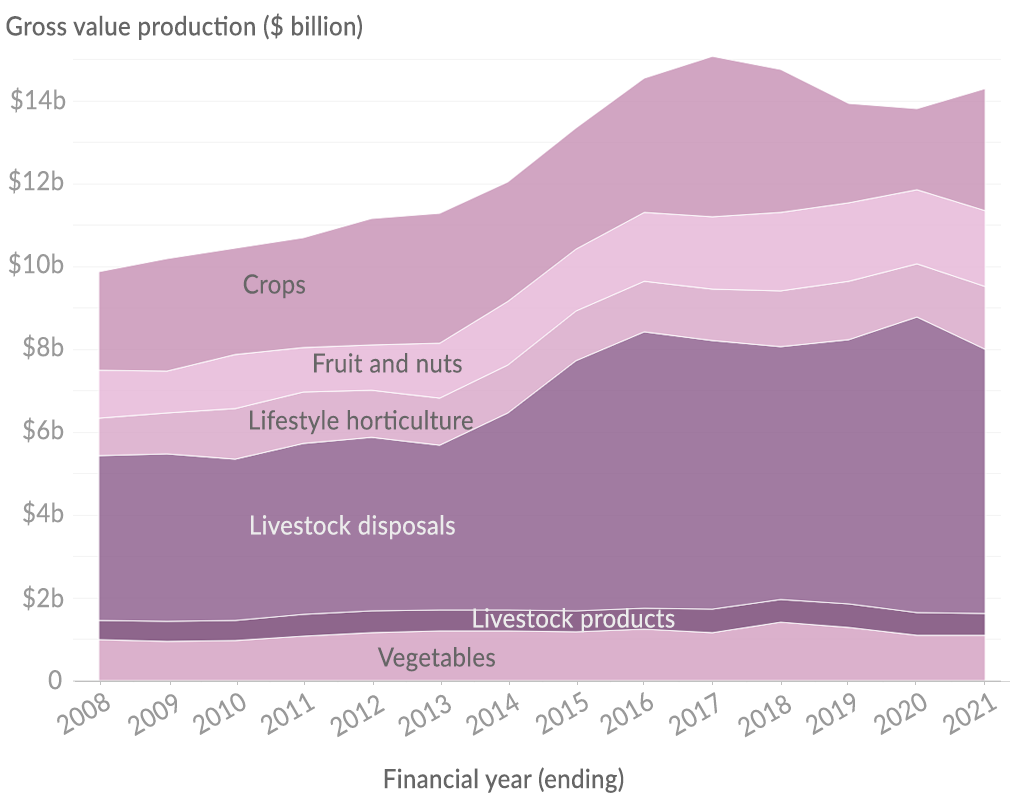Each time we visit a supermarket there’s a good chance we’ll buy something grown or produced in Queensland. The Sunshine State’s agricultural sector is a significant contributor to the state’s (and Australia’s) economy.
The Queensland AgTrends from the Department of Agriculture and provides economic forecasts and trends for Queensland’s agricultural, fisheries and forestry sectors. Published twice a year, the report contains gross value forecasts for major primary industry commodities and first-round processing activities (e.g. flour milling, meat processing, cotton ginning, etc.).
The associated is available via the Queensland Open Data and also contains the number of agricultural businesses, size of land holdings, and employment numbers.
Severe drought has impacted production more than COVID
The total value of Queensland’s primary industry commodities is estimated to be $19 billion in 2020-21, an increase of $281 million (1.5%) from 2019-20. This is the first increase in total value since 2016-17 — since much of Queensland’s agricultural regions have endured one of the worst droughts in recent history. And despite recent increases in rainfall, about of the state remains in drought.
The estimates also indicate minimal disruption to the agricultural, fisheries and forestry sectors due to COVID-19. But as the report notes, the pandemic will “continue to affect agricultural supply chains — including international trade and on-farm labour supply — and consumer demand for agricultural products”.
Gross value production forecasts by sector, 2007-08 to 2020-21

The livestock industry is big in Queensland
Livestock disposals ($6.38 billion) is estimated to be the biggest contributor within the agriculture sector ($15b) in 2020-21, and contributes about 33% of the total value of Queensland’s primary industry commodities.
The value of first-stage processing (value-added production) is estimated to be $4.04 billion in 2020-21. Fisheries and forestry sectors make relatively small contributions.
Estimated value of Queensland's agricultural industries, 2020-21

Queensland farms provide a lot of Australia’s produce
Many of the staple produce items we buy come from Queensland. Not surprisingly, almost all of our pineapples (99%) and bananas (96%), and about 60% of mangoes, come from Queensland. But the state also produces about 58% of our avocados, 58% of mandarins, 51% of sweet corn and 47% of Australia’s pumpkins. And almost half of our cattle and calves come from Queensland.
Queensland's share of Australian agricultural production, 2007-08 to 2020-21

Queensland livestock industry has boomed
Between 2012-13 and 2015-16, the gross value of production of Queensland livestock grew from $3.98 billion to $6.67 billion, an increase of almost 68% in three years. However, the value of livestock disposals is estimated to drop in 2020-21 to $6.38 billion (from a recent high of $7.12 billion in 2019-20).
The other trend to note is the drop in value of crops since 2016-17 — potentially due to drought. The value of crops is estimated to increase in 2020-21.
Gross value production estimates for Queensland’s agricultural industries, 2007-08 to 2020-21

We recommend consulting the researchers or data custodians to understand the nuances of the data and know the limitations of the conclusions that can be drawn. And if you have analysed this dataset (or a related dataset), we’d love to hear from you! Get in touch via (@salsadigital) or contact us.
The associated data from Queensland AgTrends is available via the Queensland Open Data .
LinkedIn: Department of Agriculture and Fisheries

